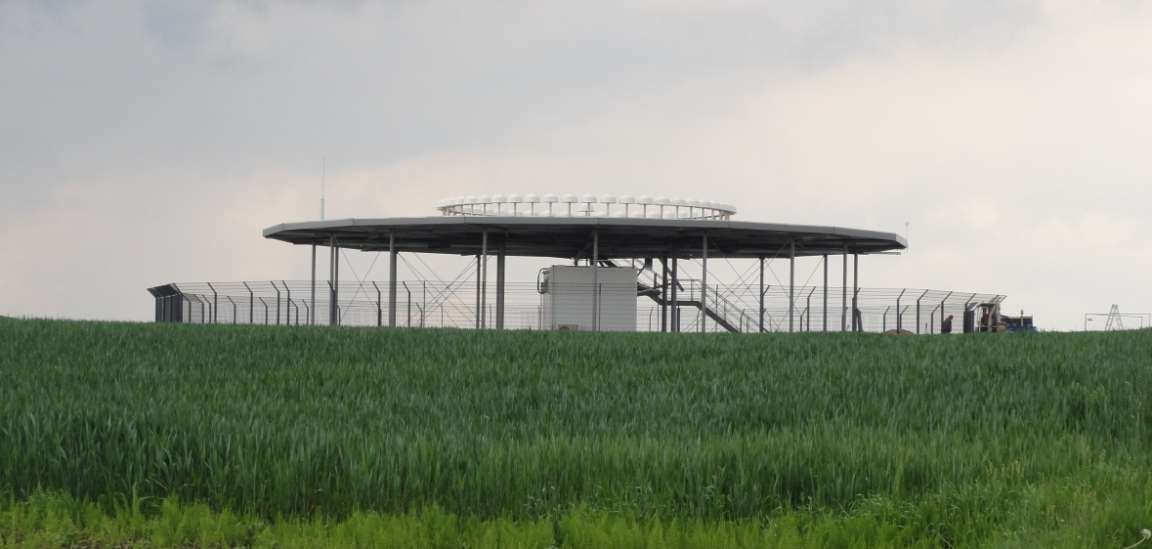More areas for onshore wind energy in Germany
DFS is reducing the size of its protected areas around radio navigation aids

From 1 August 2022, DFS, the German air navigation service provider, is reducing the size of its protected areas around omnidirectional radio beacons. In doing so, DFS is opening up potential areas to erect more wind turbines in the vicinity of its radio navigation aids in Germany. This is a significant contribution to the transition to sustainable energy sources. Intensive cooperation between numerous bodies was required to pave the way for this, namely the German Ministry for Digital and Transport (BMDV), the German Ministry for Economic Affairs and Climate Action (BMWK), the Federal Supervisory Authority for Air Navigation Services (BAF), the National Metrology Institute of Germany (PTB) and DFS.
To improve the compatibility of air traffic control and wind energy, the BMDV, the BAF and DFS have initiated extensive measures in recent months. The common goal was to ensure the smooth operation of air navigation facilities whilst also taking energy policy concerns into account and making more areas available for the expansion of onshore wind energy. Essential elements to achieving this goal were developed by the National Metrology Institute of Germany (PTB) within the framework of the WERAN research project on the interaction of wind turbines and radar/navigation, funded by the Federal Ministry for Economic Affairs and Climate Protection (BMWK). The measures now being taken by DFS implement crucial elements of the agreement made between the Federal Ministry for Digital and Transport (BMDV) and the Federal Ministry for Economic Affairs and Climate Action (BMWK) on 5 April 2022.
Dr Volker Wissing, German Federal Minister for Digital and Transport (BMDV): "Wind power is of great importance for climate-friendly energy supply in our country. On the basis of the latest scientific findings, we have made it possible in a very short time to reduce the safe distances between wind turbines and air navigation and meteorological facilities. This will lead to a quicker expansion of wind power generation. We have now removed a significant obstacle in this process. My thanks go to all those involved who have managed to constructively reconcile the different requirements with great commitment."
Dr Robert Habeck, German Federal Minister for Economic Affairs and Climate Action (BMWK): “We will have more areas for wind energy whilst safeguarding the safety of radio navigation. This successful cooperation with the aviation authorities is a very good example of how we are removing barriers at all levels to accelerate the expansion of renewable energy sources. As these measures taken by DFS are opening up more spaces for the erection of wind turbines, there will be a significant improvement in the ability to issue permissions for future planning applications for wind turbines.”
Protected areas are being reduced in size
In April 2022, the Federal Ministries of Transport (BMDV) and Economic Affairs (BMWK) agreed to review the protected areas of air navigation facilities following new scientific findings gained in the WERAN project. On the basis of new criteria, DFS can now reassess the protected areas of the Doppler very high frequency (VHF) omnidirectional radio (DVOR) beacons and determine whether these areas can be reduced to a radius of seven kilometres as proposed by PTB. It is only within this radius that air traffic control issues need to be taken into account in construction projects. This reassessment is starting on 1 August 2022 and is expected to be completed by the end of 2022. The results that are already available allow a reduction of the protected areas from 1 August 2022 for the following facilities: DVOR Klasdorf, DVOR Gedern and DVOR Fulda. DFS expects that many more protected areas can be reduced in size, thus removing one of the major barriers in the planning of wind turbines.
New calculation formula for conventional radio beacons
Possible interference stemming from wind turbines and affecting the navigation data provided by radio beacons (the so-called bearing error) is determined by means of a calculation formula. DFS and PTB have been able to develop a new formula which allows more precise predictions. For the more robust Doppler VHF omnidirectional radio beacons (DVOR), a formula that was also jointly developed has already been used since 2020 and has led to positive approvals on the air traffic control side for new wind turbines increasing to over 90 percent since then. With the new formula for conventional VHF omnidirectional radio (CVOR) beacons, which can probably be used from the end of September 2022 on, it is likely that approvals for wind turbines in the vicinity of this type of beacons will also increase.
Acceptance of higher bearing errors
Due to a reassessment of the performance requirements for area navigation and technical modifications to the air navigation facilities, a higher bearing error stemming from wind turbines, for example, has become acceptable. The overall ‘error budget’ available can be more than doubled in some cases, from 1.0° today – depending on the type of facility – to 1.5° or 2.1°. This allows the construction of additional wind turbines in the protected areas of omnidirectional radio beacons.
Dismantling and conversion of omnidirectional radio beacons
In the course of introducing modern, increasingly satellite-based navigation procedures, DFS is currently reviewing its approximately 2,600 flight procedures in German airspace. The new procedures will allow the dismantling of omnidirectional radio beacons in many places. Since 2002, 17 facilities have already been dismantled; of the 51 facilities currently owned by DFS, another 20 are expected to have been dismantled by 2032.
In addition, support provided by the Federal Ministry for Economic Affairs and Climate Protection (BMWK) has made it possible to convert eight CVORs into DVORs, which are less susceptible to interference.







.jpg)
.png)
Comments
There are no comments yet for this item
Join the discussion